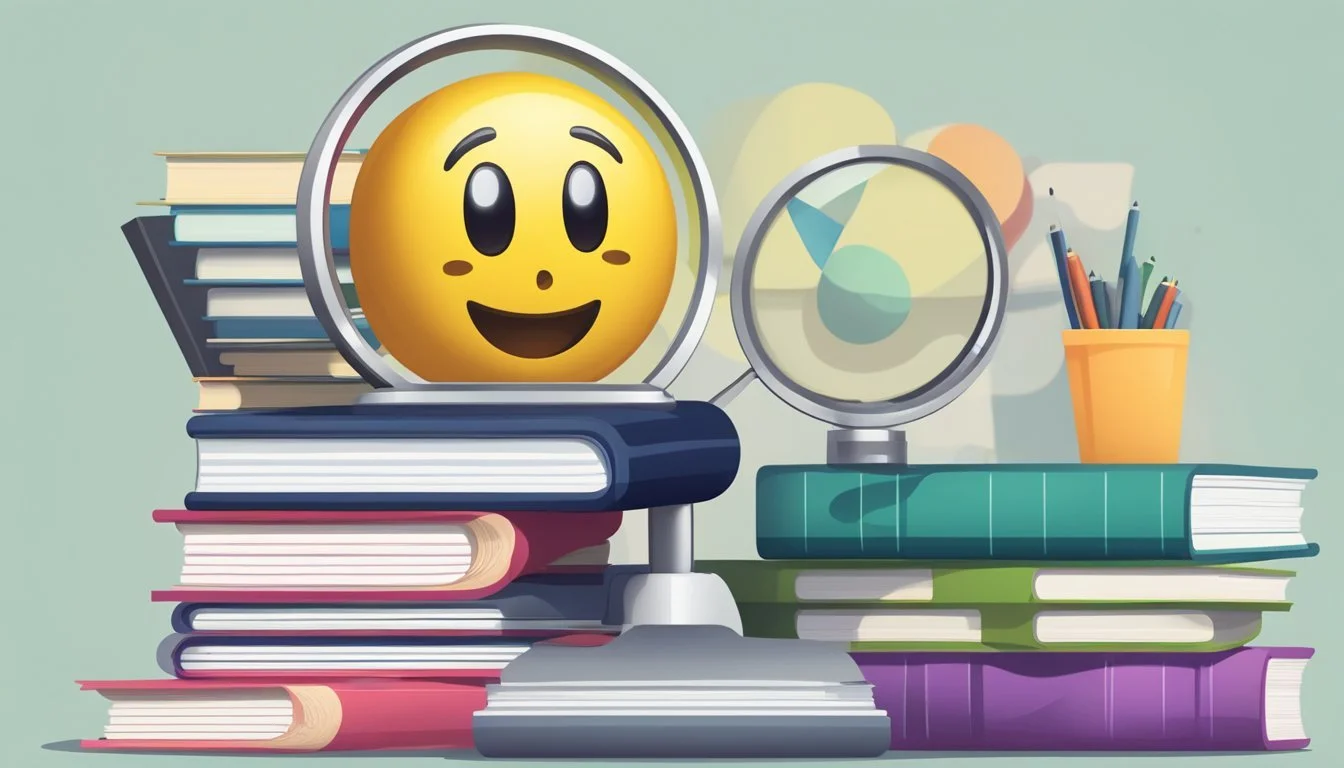Representing Psychopathic Traits Through Digital Icons
Emojis have become a universal language in digital communication, allowing users to express emotions and ideas concisely. Among the vast array of available emojis, some have come to be associated with darker themes, including those related to psychopaths or psychological thrillers.
The most common emojis used to represent psychopaths or psychopathic themes include the skull (☠️), knife (🔪), and smiling face with horns (😈). These symbols often appear in discussions about horror movies, crime dramas, or psychological thrillers. While no official "psychopath emoji" exists, creative combinations of existing emojis can convey complex ideas related to this topic.
Content creators and social media users frequently employ these emojis to add nuance or atmosphere to their posts about fictional characters, true crime stories, or psychological concepts. However, it's important to use such symbols responsibly and be aware of their potential impact on viewers, especially in sensitive contexts.
Understanding Emojis
Emojis have become a vital part of digital communication, allowing users to express emotions and ideas concisely. They range from simple smileys to complex symbols, each carrying unique meanings across different contexts and cultures.
Evolution of Emoji Use
Emojis originated in Japan in the late 1990s as simple pictographs. Their popularity quickly spread globally, leading to standardization by Unicode in 2010. Today, emojis are available on most digital platforms and devices.
The number of emojis has grown from 176 in 2010 to over 3,600 in 2022. This expansion includes diverse skin tones, gender options, and cultural symbols.
Emojis now play a significant role in text-based communication. They add emotional context, tone, and nuance to messages that plain text often lacks.
Psychopath Emoji in Digital Communication
While no official "psychopath emoji" exists, users sometimes combine existing emojis to convey this concept. Common combinations include:
🔪😈 (knife + devil face)
🩸🤡 (blood drop + clown face)
🧠💀 (brain + skull)
These combinations often appear in discussions about thriller or horror content. They may also be used humorously or to express intense emotions.
It's important to note that such usage can be subjective and potentially offensive. Context is crucial when interpreting these emoji combinations.
Cultural Relevance and Interpretation
Emoji interpretation can vary significantly across cultures. A gesture considered positive in one country may be offensive in another.
For example, the 👌 emoji is generally positive in Western cultures but can be vulgar in some Mediterranean countries.
Platforms like Facebook and Twitter have worked to make emojis more culturally inclusive. This includes adding emojis representing different foods, flags, and religious symbols.
Age groups also interpret emojis differently. Younger users often use emojis ironically or assign new meanings to existing ones.
Understanding these cultural and generational differences is key to effective emoji use in global digital communication.
Creation and Customization of Emojis
Custom emojis allow users to express themselves uniquely online. Several platforms offer tools to design and add personalized emojis, including those with psychopathic themes.
Custom Emoji Platforms
Slack provides robust custom emoji functionality. Users can upload images or create emojis directly within the platform. To add custom emojis in Slack, navigate to the Customize Slack section in the workspace settings. Click "Add Custom Emoji" and upload an image file. Give the emoji a name and save it.
Discord also supports custom emojis. Server owners and users with the proper permissions can add emojis through the Server Settings menu. Select the "Emoji" tab, then click "Upload Emoji" to add new images to the server's emoji collection.
Guilded, a newer platform, offers similar custom emoji features. Users can upload images to create unique emojis for their servers or communities.
Designing Your Own Psychopath Emoji
Several online tools make creating custom emojis simple. Emoji Maker by EmojiAll lets users combine facial features, expressions, and accessories to build unique characters. This tool could be used to create a psychopath-themed emoji by selecting appropriate elements like intense eyes or a sinister smile.
Kapwing's Custom Emoji Maker offers more advanced options. Users can upload their own images, add filters, animations, and backgrounds. This flexibility allows for detailed psychopathic emoji designs.
Canva provides a free emoji generator with a vast library of stock images and illustrations. Users can customize existing templates or start from scratch to create complex psychopath-themed emojis.
Adding to a Digital Platform
Once designed, adding custom emojis to platforms varies. In Slack, users with the necessary permissions can upload emojis directly through the customization settings. Discord requires server management permissions to add emojis via the server settings.
Some platforms use emoji bots to streamline the process. These bots can automatically add emojis from specified sources or databases. Users typically need to invite the bot to their server and grant it appropriate permissions.
When adding custom emojis, consider file size and format restrictions. Most platforms accept common image formats like PNG or GIF, but may limit file sizes to ensure quick loading times.
Legal and Usage Policies
Navigating the legal landscape of emoji usage requires understanding intellectual property rights, platform rules, and individual responsibilities. Users must be aware of potential consequences and limitations when incorporating emojis into digital communications.
Intellectual Property Concerns
Emojis are subject to copyright protection. Most emoji designs are owned by tech companies or consortium organizations. Using emojis in commercial contexts may require licensing agreements or permissions. Some platforms provide basic licenses for emoji use within their ecosystems. However, creating derivative works or using emojis in branding often necessitates explicit approval from rights holders.
Custom emojis, like a hypothetical "psychopath emoji", could face additional scrutiny. Creators must ensure their designs don't infringe on existing trademarks or copyrights. Legal experts advise conducting thorough research before developing and distributing new emoji concepts.
Terms of Service Compliance
Social media platforms and messaging apps typically outline emoji usage in their Terms of Service (ToS). Users agree to these terms when creating accounts. ToS often prohibit the use of emojis to convey hate speech, harassment, or illegal activities. Violations can result in content removal, account suspension, or banning.
Platforms may have specific policies regarding controversial or potentially offensive emojis. A "psychopath emoji" could fall into this category, depending on its design and context of use. Users should familiarize themselves with platform-specific guidelines to avoid unintentional breaches.
User Responsibilities and Permissions
Individuals bear responsibility for their emoji usage in digital communications. In legal contexts, courts increasingly consider emojis as evidence. Misuse of emojis in threats, fraud, or defamation can lead to real-world consequences.
Users should exercise caution when employing emojis in professional or formal settings. Some workplaces have policies governing emoji use in company communications. In sensitive discussions or legal matters, it's advisable to avoid ambiguous emojis that could be misinterpreted.
Reporting mechanisms exist on most platforms for users to flag inappropriate emoji usage. These systems help maintain community standards and protect users from potential harm or offense caused by misused emojis.
Emoji Implementation and Technical Aspects
Emoji implementation involves complex technical processes to integrate these expressive icons into messaging platforms. Database management, app integration, and algorithmic suggestions play crucial roles in delivering a seamless emoji experience to users.
Integration Into Messaging Apps
Messaging apps incorporate emojis through Unicode standards, ensuring cross-platform compatibility. Developers implement emoji keyboards and selection interfaces within the app's user interface. Some platforms, like Slack, allow custom emoji uploads, enhancing user expression.
Emoji support requires regular updates to include new Unicode-approved icons. Apps must handle emoji rendering across different device types and operating systems. Fallback mechanisms are implemented to display alternative characters when specific emojis are unsupported.
Database and Emoji Storage
Emoji databases store vast collections of icons, including metadata like keywords and categories. These databases use efficient indexing for quick retrieval during user searches. Unicode codepoints serve as unique identifiers for each emoji.
Storage systems must accommodate frequent updates as new emojis are introduced. Compression techniques help minimize storage requirements for large emoji sets. Some platforms maintain separate databases for standard and custom emojis.
Algorithmic Emoji Suggestions
Smart algorithms analyze message context and user behavior to suggest relevant emojis. Machine learning models train on large datasets of emoji usage patterns. Natural language processing techniques help interpret message sentiment for accurate suggestions.
Suggestion systems consider factors like frequently used emojis, time of day, and recipient. Real-time processing ensures quick emoji recommendations as users type. Personalization algorithms adapt suggestions based on individual preferences over time.
Feedback mechanisms allow users to refine suggestions by accepting or dismissing recommendations. Privacy considerations are crucial when implementing emoji suggestion features.
Community and Social Aspects
Emojis play a significant role in online interactions, shaping communication styles and fostering connections within digital communities. Their use varies across platforms and user groups, creating unique social dynamics.
Emoji Use in Online Communities
Different online communities adopt distinct emoji preferences and conventions. Reddit users often employ emojis sparingly, while platforms like Instagram see more frequent use. Some communities create their own custom emojis or assign special meanings to existing ones.
Emoji usage can signal group membership or insider status. For example, certain subreddits may have unwritten rules about which emojis are acceptable. This creates a form of in-group language that strengthens community bonds.
Platform-specific features also influence emoji use. Twitter's character limit encourages concise expression, making emojis valuable for conveying tone efficiently. Discord allows custom emojis, enabling communities to develop unique visual languages.
Emoji Combinations and Their Meanings
Users creatively combine emojis to express complex ideas or emotions. The skull emoji (💀) paired with a laughing face (😂) often indicates something is extremely funny. The combination of a knife (🔪) and smiling face (😊) might suggest dark humor or sarcasm.
Some emoji combinations gain widespread recognition and become de facto standards. The eyes (👀) followed by lips (👄) and eyes again (👀) is widely understood to express shock or intrigue.
Platforms like Emojipedia document these evolving combinations, helping users stay current with emerging trends. This dynamic process of meaning-making demonstrates the adaptability of emoji language in digital spaces.
User Generated Content and Emoji
Social media users actively create and share emoji-centric content. This includes "emoji challenges" where participants recreate scenes or concepts using only emojis. Such activities foster engagement and creativity within online communities.
Emoji-based memes spread rapidly across platforms, often gaining new meanings or variations. The "🥺👉👈" combination, for instance, became a widely recognized symbol for shyness or hesitation.
Some users create entire stories or poems using only emojis, pushing the boundaries of this visual language. These creative exercises showcase the expressive potential of emojis beyond simple emotional indicators.
Blogs and websites dedicated to emoji art and storytelling have emerged, providing spaces for users to share and discuss their emoji-based creations. This user-generated content contributes to the ongoing evolution of emoji culture and usage.
Resources and Further Reading
Emoji databases and educational materials provide valuable information for those interested in psychopath-related emojis. These resources offer comprehensive collections and guidance on appropriate usage.
Online Emoji Databases and Catalogs
Several online platforms host extensive emoji databases. Emojipedia stands out as a leading resource, offering detailed descriptions and cross-platform comparisons for psychopath-related emojis. Unicode.org maintains the official emoji standards, including new additions and revisions.
Some websites specialize in niche emoji collections. PsychoEmojis.com curates a focused set of psychopath-themed symbols. These databases often include search functions (🔎) to quickly locate specific emojis.
Many platforms allow users to copy and paste emojis directly. This feature simplifies the process of incorporating psychopath emojis into digital communications.
Educational Materials on Emoji Usage
Blogs and articles provide context for using psychopath emojis appropriately. PsychologyToday.com offers insights on the psychological impact of emoji use in digital communication.
Academic papers explore the role of emojis in expressing complex emotions. These studies can be found on platforms like JSTOR and Google Scholar.
Style guides from major tech companies outline best practices for emoji implementation. Apple and Google publish developer resources detailing emoji design and integration.
Some universities offer courses on digital communication, which often include modules on emoji usage and interpretation.





